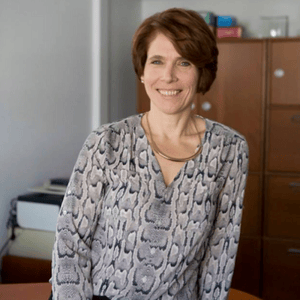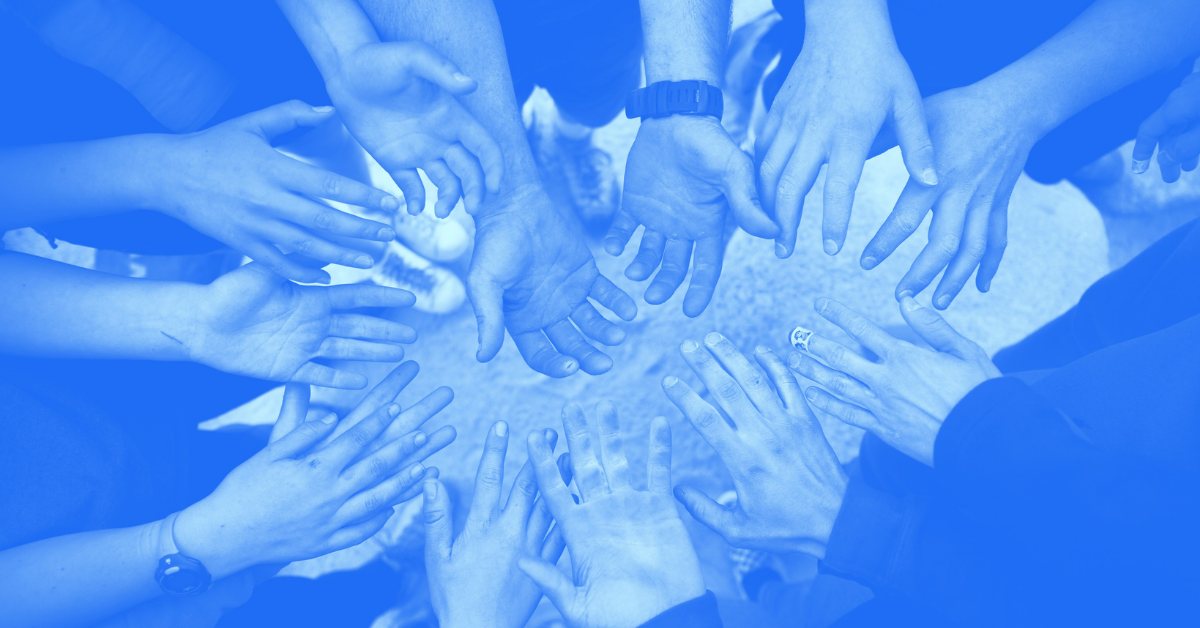Feminism that Doesn’t Address Racism Misses the Point
Share this
Dr. Cori Wong, Assistant Vice President of Gender Equity at Colorado State University, has spent her career studying feminism and aims to “disrupt dominant narratives that perpetuate oppression”. Wow! What does that mean? How does it apply to me and my life?
As a white woman from an upper-middle-class family, I’ve wanted to “help” those who weren’t as privileged. But am I contributing to the oppression of marginalized communities? Do I look at how I’m reinforcing our cultural biases against inclusion? Am I really trying to help marginalized communities or am I really just trying to make myself feel better or less guilty for being “born with a silver spoon in my mouth”?
I don’t know anyone who purposefully excludes certain groups of people. I do know a lot of people who exclude people unconsciously without thought or question. Dr. Wong challenges us all to understand how we can approach being more inclusive so that we are actually including everyone and not just making ourselves feel good for “doing good”.
In watching Dr. Wong’s Ted Talks (On Thinking for a Change, Honest confidence and the Lies of the Best), a presentation of her Ph.D. dissertation on Positive Philosophy, and reading several of her blogs, I realized maybe I was approaching inclusion wrong. She makes it clear, it’s easy to get wrong.
Could inclusion and diversity be approached in a different way?
WW [white women] getting mad when WOC [women of color] point out racism in feminism is like getting mad at being told there’s junk in your teeth. IT’S A FAVOR. FIX UR FACE. – Eliza Skinner @elizaskinner tweet
This was posted in response to white women feminists fighting hard for women’s rights from a white women’s point of view and not realizing they are leaving behind so many women who have had a different journey. By not including the issues and realities of all women, feminism will never truly achieve an equal platform for women. By addressing the issues of women of color or queer women, not only are these groups allowed to participate more fully but all women are better off.
Dr. Wong will discuss intersectionality in an online event coordinated by XYPN’s Diversity Committee. Register for the live event October 24, 2019.
While low-income people can be discriminated against. Low-income men and low-income women are treated differently. While women can be discriminated against, low-income women and high-income women are discriminated against differently. Often low-income women will be discriminated against, not doubly but in two contexts where her overlapping “marginal groups” are excluded. That’s intersectionality.
Our country has been white, male-dominated since its founding. As a white woman, I’m ignorant of the world view of a black woman. While we may have some overlap being women in a male-dominated and defined world, there are many experiences, values, and messages coming to us from our culture that are very different. For me to think that I understand a Latina, transgender, low-income woman would be naive, at best.
As a white woman, I share with white men, privilege and advantage that other women don’t have. When I read Americanah by Chimamanda Ngozi Adichie, about a Nigerian woman moving to the U.S., I’ll be honest, I was angry for the first half of the book as she described her life and the white world around her. About halfway through the book, the light bulb went off for me. I was judging her from my white, “wealthy”, European perspective. Would I make the same decisions that she did if I had had her upbringing, experiences, and interactions in this new foreign land as I would from where I sit now?
Diversity and inclusion aren’t about hiring someone from another cultural group and teaching them to be more like me. If I truly want to be more inclusive, I need to leave my biases and experiences behind and listen with an open mind and open heart to other stories and experiences.
Being inclusive is hard. Understanding your own biases is even harder. Understanding somebody else’s story is a good place to start breaking down the barriers. In Dr. Wong’s TedX Talk, Feminist Friendship, I was struck when she said: “If you do social justice work that means you have to stay open to the possibility that you do it poorly.” Taking off the filters you use every day to live your life and listening to another person’s point of view without preconceived ideas takes focus and can be uncomfortable.
In the paper “Seven Steps to Culturally Responsive Financial Therapy” by Pamela Hayes, et. al., they say “Understanding the influence of culture on one’s clients begins with an understanding of cultural influences on oneself. Why? Because the more you understand the cultural influences on you, the more aware you will become of biases that can affect your work without your awareness. Bias is best thought of as a tendency to think, act, and feel in a particular way. Your particular biases grow out of your unique experiences, including family and cultural socialization, combined with the human tendency to create categories and make generalizations, which in turn contribute to particular worldviews.”
People who are different can make us feel uncomfortable. It’s easy to just ignore them and spend time with people who think like us. Discounting their point of view is far easier than seeing how a very different point of view could be congruent with what we’ve believed our whole life.
Daniel Kahneman’s book Thinking, Fast and Slow, shows many ways that we fall into our bias traps that lead to wrong answers to problems. He showed how we simplify problems to fit into what we know and understand. We also give more attention to the loudest voice, the news heard most often. If we talk about the rabbit population growing on the news every night, we tend to think rabbits are taking over the world even when our experience is that there are not that many rabbits hopping around.
The result of bias is many good, and possibly better, more correct, solutions may not even be considered when solving a problem. We focus on what we know and what’s in front of us right now.
Humans have a difficult time integrating many possibilities. So, we simplify or walk away from the problem. Recall the famous jam experiment where a choice of 20 jams was given at a store, many people bought no jam. But when given the choice of just three jams, many more people will buy one of the choices.
Do we discard people and their input the same way? If it doesn’t fit into our worldview, it must not be valid or important? Or perhaps, we don’t even give it that much thought. We just move on to the next task to be done.
In some ways, the inclusion issue can be simplified by realizing that every person is unique. And the variety makes us stronger and better. It’s not women vs men or black vs white but rather each person has a unique perspective that adds to the creativity and output of our country.
It's easy to live in your small world, to find your tribe that thinks as you do. To live in your small echo chamber that reinforces what you do and say. It’s hard to see someone presenting a different point of view and seriously question what you believe enough to integrate that other way of thinking.
The easy answer to diversity is to include people with various backgrounds. Hire various races, genders, and cultures and be happy that we have diversity. But allowing a diverse population in without giving them a voice and opportunity to contribute to solutions which might mean changing the status quo, is not being integrated.
Listening to and understanding people who are different is hard but required to make real change. Much like helping my clients is about asking a lot of questions so I know who they are, what they want, where their priorities and boundaries are. The same is true in bringing diversity into my life and my company.
I’ve learned in Financial Therapy that we are all part of the problem but we are also all part of the solution. With self-reflection and dialog, we can all help fight oppression. It’s like a tangled chain necklace. You need to start by pulling apart the knot so you can see what’s going on before you can start unweaving the tangled chain. Let’s look into the issues and see how we can work together to untangle oppression in our world.
How do we learn to integrate more voices and why is it important to grapple with these issues? How do we see that our biases can be magnified by categorizing and segregating without taking a step back to see how our biases sometimes intersect and leave blind spots? Dr. Wong will walk you through how to approach learning to live in a more inclusive world. She’ll discuss why it’s important. It’s not easy, fast, or comfortable. But is anything truly worth having ever easy, fast, or comfortable?

About the Author
Tara Unverzagt started in financial planning over 25 years ago while working in a family business co-founded by her mother before launching a firm of her own. She serves millennials and freelancers who are just starting adult life, while also working with clients at the other end of the spectrum—70+-year-old clients who have post-retirement transitions and wealth-transfer decisions to make. Tara is a member of XY Planning Network and volunteers on the Diversity Committee.
Share this
- Running Your RIA Efficiently: Outsourcing Bookkeeping with XYPN Books
- Road to Launch with XYPN Member Alan Skillern, CFP®, MBA
- Coaching for Better Time Management: Prioritizing Organic Growth in Your Daily Routine
- Boost Your Financial Advisory Practice: SEO Strategies and CRM Optimization for Sales Success
- Advisor Blog (693)
- Financial Advisors (221)
- Growing an RIA (99)
- Digital Marketing (87)
- Marketing (84)
- Community (81)
- Start an RIA (76)
- Business Development (72)
- Coaching (72)
- Running an RIA (70)
- Compliance (69)
- Client Acquisition (65)
- Technology (64)
- XYPN LIVE (59)
- Entrepreneurship (57)
- Sales (49)
- Practice Management (44)
- Client Engagement (41)
- Bookkeeping (38)
- XYPN Books (38)
- Investment Management (37)
- Fee-only advisor (36)
- Lifestyle, Family, & Personal Finance (31)
- Employee Engagement (30)
- Client Services (25)
- Financial Education & Resources (25)
- Journey Makers (21)
- Market Trends (21)
- Process (14)
- Niche (11)
- SEO (9)
- Scaling an RIA (9)
- Career Change (8)
- Transitioning Your Business (7)
- Partnership (6)
- Transitioning To Fee-Only (4)
- Social Media (3)
- Transitioning Clients (3)
- Emerald (2)
- Persona (2)
- RIA (2)
- Onboarding (1)
- Sapphire (1)
Subscribe by email
You May Also Like
These Related Stories

Lead Life by Design: Advice from Audra Bohannon
Mar 19, 2018
3 min read

How to Promote Diversity in Your Business
April 9, 2018
5 min read



